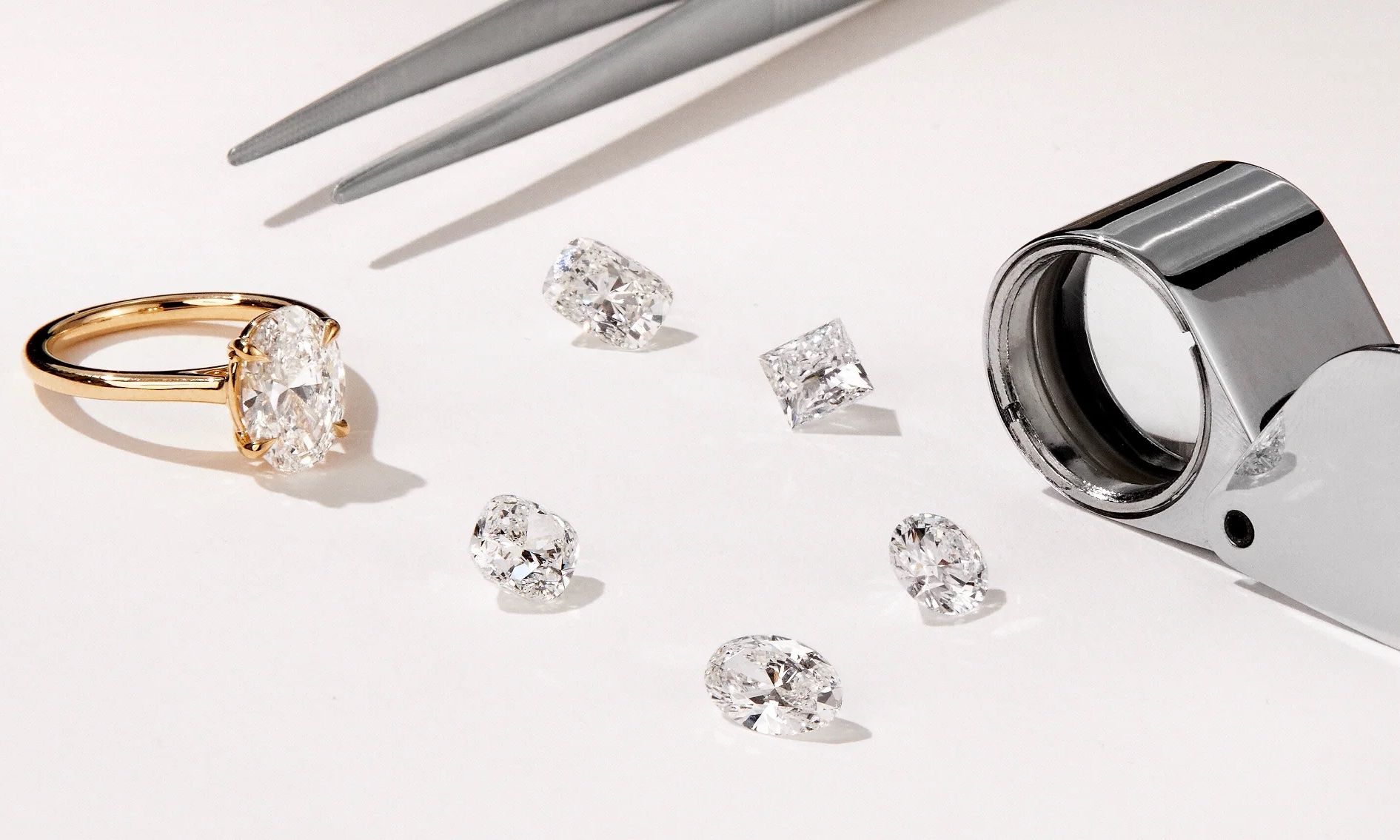
If you’ve made it this far, you’ll know that lab grown diamonds are exponentially rising in popularity as sales in the mined diamond industry fall. Comparing the two is about more than just what looks better (because, truthfully, they look exactly the same.) When it comes to choosing an engagement ring, it’s vital to have all the facts before making the final decision. So here is everything you need to know.
What is a lab grown diamond?
Laboratory processes can replicate the required conditions of forming mined diamonds to create a lab grown diamond that is indistinguishable from its mined counterpart. Mined diamonds take millions of years to form deep in the Earth, under a series of specific conditions. With modern technology, scientists have been able to create multiple methods, CVD (chemical vapour deposition) and HPHT (high-pressure high temperature) which can create a diamond chemically identical to mined diamonds – without needing to be mined at all.
Though lab grown diamonds don’t require any mining, their creation through laboratory processes like CVD and HPHT can still emit carbon and create emissions that could negatively affect our planet.
To combat this we are committed to only offering 100% carbon neutral lab grown diamonds. Since 2023, Cullen Jewellery has partnered with Clear Neutral, an innovative carbon neutral certification company that meticulously evaluates every step of the diamond production process. It then offsets our carbon footprint through investing in verified carbon reduction projects worldwide. You can read more about Clear Neutral’s work here .

Can you tell the difference between lab and mined diamonds?
To the naked eye, mined diamonds and lab grown diamonds look the same . Even the most trained eye won’t be able to tell the difference. The only way to distinguish both is with specialised tools which determine the chemical origin of the stone. While many mined diamond brands and jewellers avoid likening the two stones, the central bodies that issue authenticity certificates on mined diamonds - the GIA (Gemological Institute of America) and IGI (International Gemological Institute) - actually do the same for lab grown diamonds.
Are lab diamonds as good as mined diamonds?

The mined diamond industry, while having a long history and heritage, is losing trust with consumers. This is due to the growing awareness of the environmental strain that diamond mining puts on communities located close to the mines, including air and water pollution, which completely depletes their landscape. When coupled with blood diamonds and other ethical problems, buying mined diamonds can be a big responsibility. Lab grown diamonds are the perfect solution – you can have a diamond that looks and is chemically the same as a mined diamond but for a fraction of the price.
If you’ve read about the Mohs scale (which measures gemstone hardness ), you’ll know mined diamonds are the hardest, measuring at a 10. And (you’ve guessed it) lab grown diamonds measure the same. When it comes to quality, lab grown diamonds might generally surpass mined diamonds. Where mined diamonds come in a vast range of qualities, due to the nature of their formation in the earth, lab grown diamonds are made in a controlled environment, so generally have a better colour and clarity grade.
We’re not in the business of forcing a message, but it’s clear to see if you’re looking for a diamond without the leg work to ensure the quality of the stone and the ethics of its sourcing – a lab grown diamond is a no-brainer.
Here at Cullen Jewellery, we specialise in customisation, so along with our endless range of lab grown engagement rings and wedding bands, if you have your heart set on a mined diamond ring design, we can recreate it with stones you can feel good about. If you’d like to talk more about designing a custom ring – get in touch with us and start the process here .
Explore Lab Grown Diamond Engagement Rings